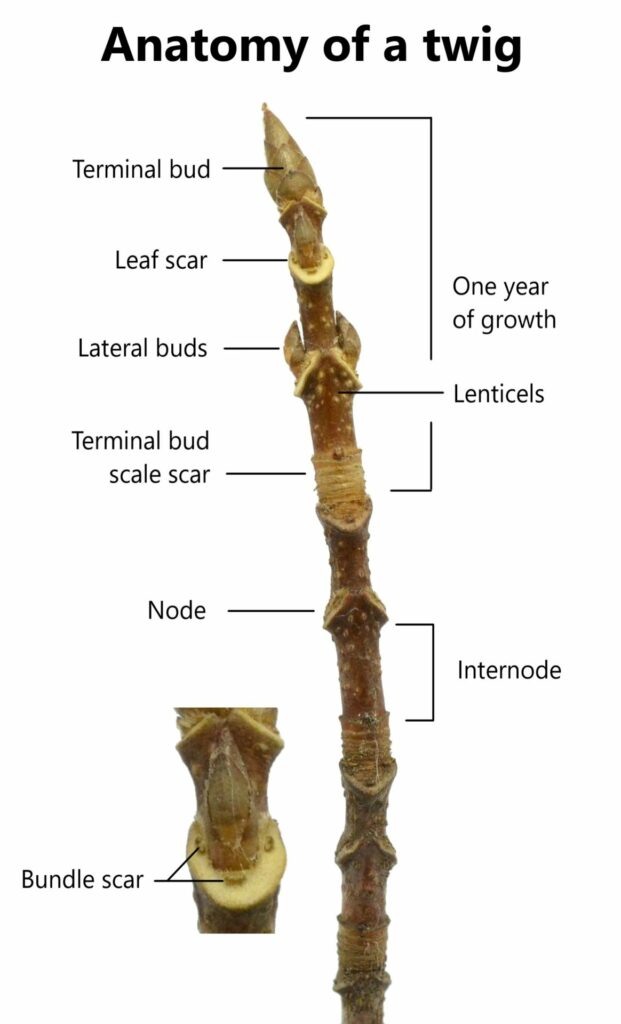Twigs + Buds
Overview | Anatomy of a Twig | Epicormic Buds
THE MANY FACES OF A TWIG
The word twig shares etymological roots with the word “two”, denoting a forking point on a branch. The growth and development of twigs allows a tree to bend and weave its way through the environment in search of sunlight. The apical buds Technically a twig is the most recent year’s growth on a woody perennial. The twig is tasked with many critical functions for the plant. It holds the tree’s leaves and flowers in the spring and summer, it must excise the leaves in the fall while not allowing pathogens into the , and in the winter, it must protect the following year’s growth from cold temperatures and dry winds.
Below you’ll find descriptions of the various anatomical features of a twig as well descriptions of the variation in twigs.
Anatomy of a twig
Twig: A thinner, small branch on a tree, often with several years of growth.
Bud: An undeveloped stem that contains undeveloped leaves and sometimes undeveloped flowers.
Terminal bud: Located at the tip of the twig, typically larger than lateral buds. Lacks a leaf scar. Called the apical bud on the lead shoot at top of plant.
False terminal bud: Lateral bud that functions as a terminal bud would. Forms after the tip of a branch withers and dies, leaving the next in tact lateral bud as the new
Terminal bud scale scar: scars encircling the twig, left behind from terminal bud scales falling off (not present on all twigs).
Lateral buds: Located on the sides of a twig, having the same arrangement (opposite, alternate, or whorled) as the leaves.
Leaf scar: Scar left behind from where the petiole abscised from the twig.
Bundle scar: Small marks on the leaf scar where vascular bundles travels from the stem to the veins of the leaves.
Node: Place on the twig where one or more leaves/buds are borne.
Internode: Part of the stem between nodes.
Lenticels: Pores in the periderm that facilitate gas exchange. Uptake of CO2 aids in photosynthesis undertaken by the bark and uptake of O2 facilitates metabolism that fuels growth in the spring, which is why lenticels can be concentrated near buds.
Pith: The central part of a twig, made of parenchyma cells. In developing twigs, it functions in the storage and transport of nutrients (trees with compound leaves tend to have much larger pith than those with simple leaves). As the twig matures, pith cells die and lose their functionality. As the soft, spongy pith cells die, they break down, and at maturity can be hollow or chambered.

